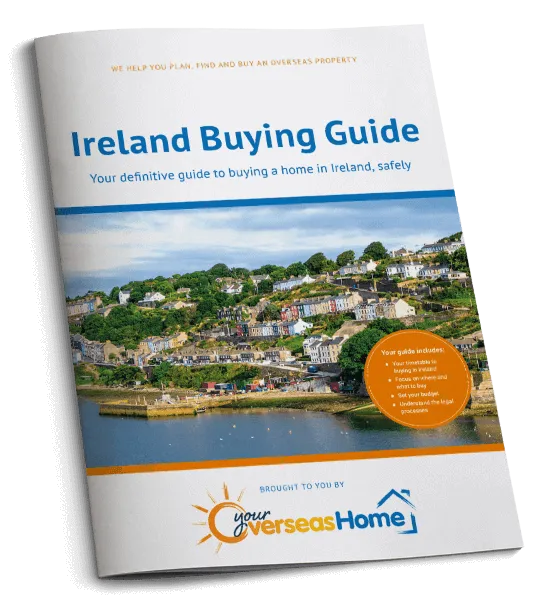Are you looking to move to Ireland but haven’t settled on a place yet? Dublin, the capital of the Republic of Ireland, is a great option.
Dublin is Ireland’s largest city, and home to just over 540,000 people. By comparison, that’s about the same number of people who call Sheffield home.
On an international scale, Dublin is bigger than Paris (117m2 vs 104km2) but less than 1/10 of the size of London, England. Here’s a guide for all those considering a move to Dublin.
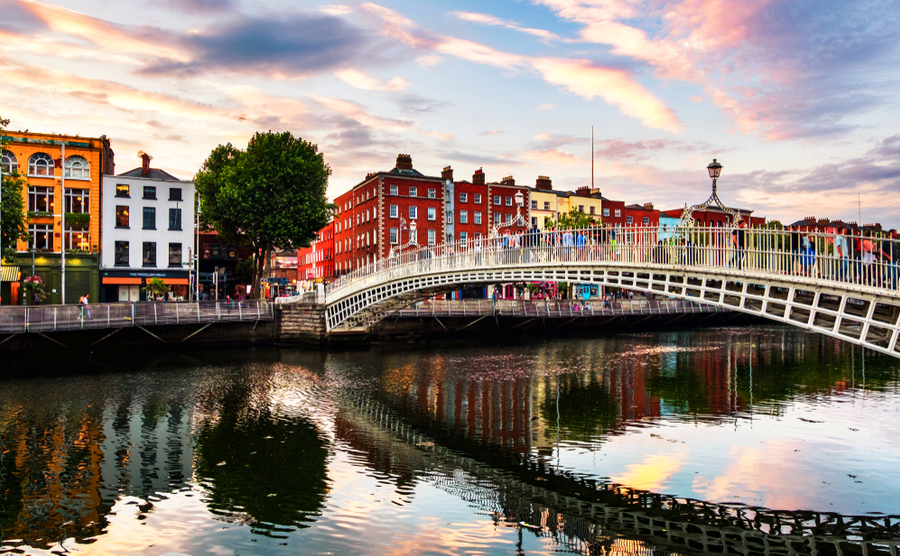
Night view of famous illuminated Ha Penny Bridge in Dublin
What’s the weather like in Dublin?
Ireland’s verdant countryside, sadly, comes at a cost. It takes quite a bit of rain to maintain the lush greenery that surrounds Dublin. The weather is usually chilly in winter and autumn, with average temperatures between 5 -10°C. In spring and summer, it doesn’t get much warmer, but temperatures do remain above 10°C for an average of 6 months per year. The hottest months are July and August.
If you’re considering a move to Dublin, don’t be hoping for Mediterranean climate. Put simply, Ireland isn’t for those who dream of sunbathing summers. You might be lucky with the odd day that reaches the early 20°Cs, but that’s about it. Rain is common, but not persistent, so it won’t ruin your fun.
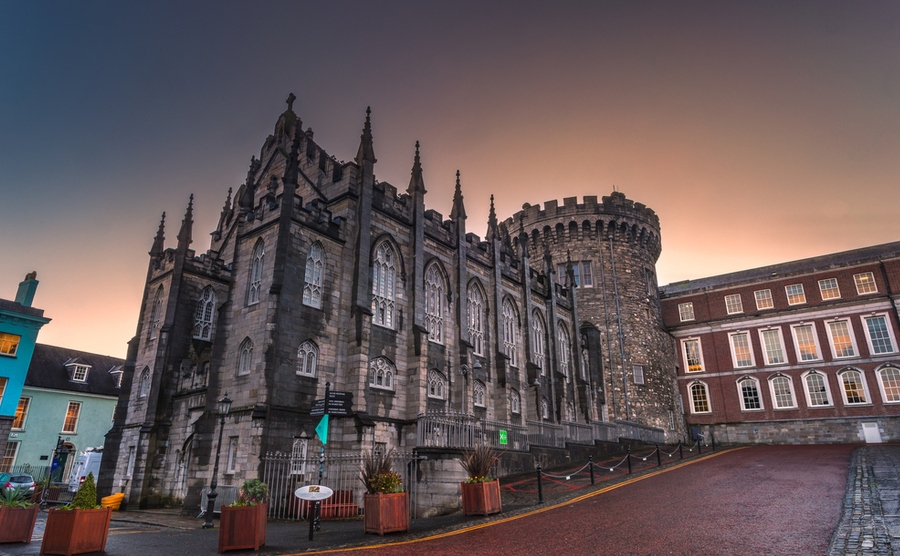
Dublin castle on Dame Street, Dublin
What is Dublin known for?
Dublin is a historic city with ties that date as far back as 6,000 years ago. Most of the Dublin we see today was built in the Georgian era, but one of the oldest monuments in the city is Dublin Castle which was built in 1204!
There are lots of attractions in the city, enjoyed by tourists and locals alike. They include the Guinness Storehouse tour (you’ve got to do it at least once), St. Patrick’s Cathedral, the Little Museum of Dublin and The Kilmainham Gaol Museum.
If you’re considering a move to Dublin, you’ll be happy to hear Dublin has a lot to offer in terms of nature. Whether you’re after a jolly jaunt or a full-day’s hike, there’s a world of activities on your doorstep.
Fun fact: Dublin is home to Europe’s widest street. Many mistake it for Paris’ Champs-Elysées, but O’Connell Street in Dublin takes the gold at a staggering 160ft wide!
Locals often spend their weekends enjoying a pint in their local, going shopping on Grafton Street, attending local sporting events (hurling, camogie, or Gaelic football), visiting Phoenix Park, or going for a walk along the cliffs of Moher or the Wicklow Mountains.
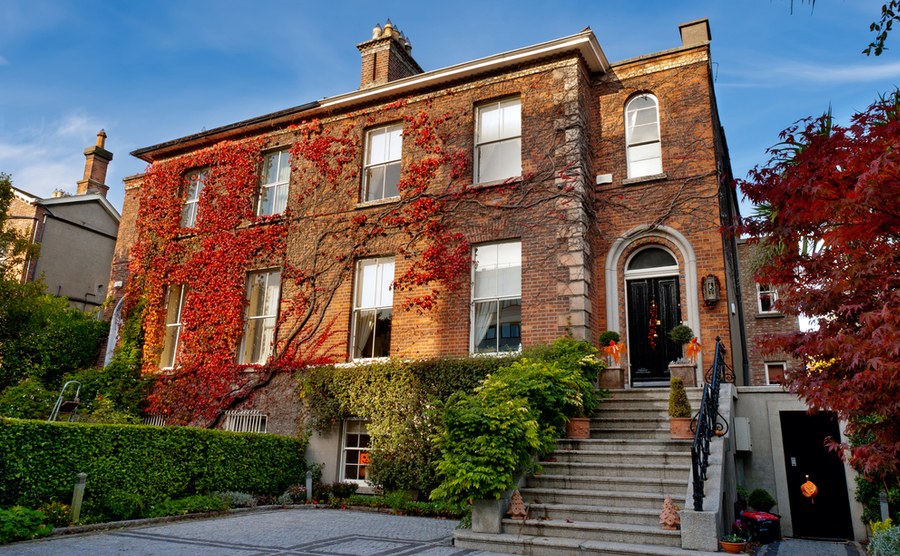
A typical home in Dublin
Properties in Dublin
Homes for sale in England are quite similar to those in the UK. The most common property type in Dublin, just from my own observation is terraced houses and semi-detached homes.
There are two sides to Dublin. The city centre and the coast. If you’re used to a buzzing capital city, you’ll settle in quickly to the bustling lifestyle of Dublin city, but if it’s peace and quiet you’re after, head towards the coast.
Killiney and Seapoint lie south of the city and border the coast. Properties here can be more expensive than the city centre as developers have found more room to build. Plus, beautiful seaside views!
Malahide and Howth are slightly cheaper options on the northern side of Dublin, both well connected to the city centre.
Like most cities, Dublin has areas with high price points. Think of Ranelagh and Clontarf as the Notting Hill of Dublin. Homes here are well connected as it takes just 10 minutes to get into the city.
If you’re after a more family-friendly neighbourhood, Ballsbridge and Donnybrook are great options. They have more open spaces and facilities equipped to entertaining children.
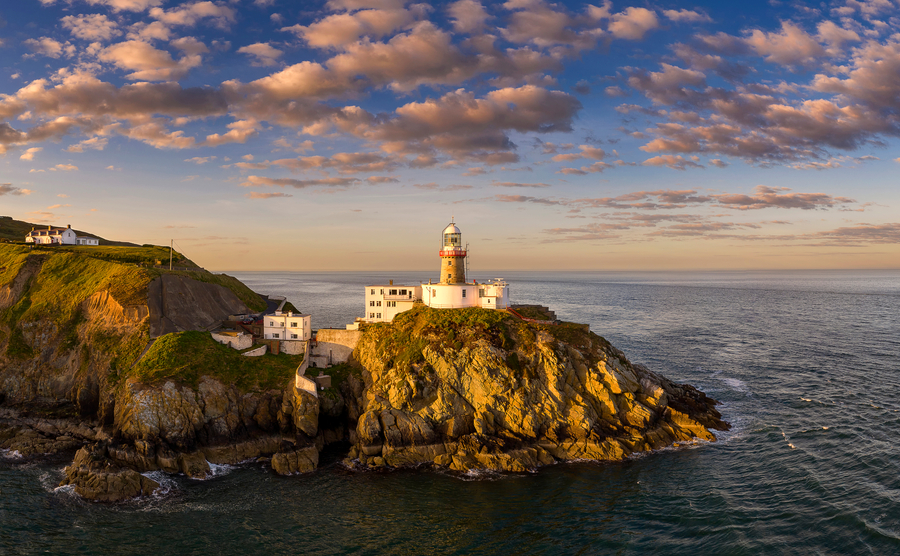
The Baily Lighthouse, Howth, County Dublin
Property prices
Property prices in Dublin rose last year but monthly changes since then have been steady. This comes after two years of market uncertainty which was hugely detrimental to the economy.
However, estate agents are optimistic for a strong market in 2023. Prices in the city centre are typically cheaper than in London, with 2-3 bedroom apartments in the heart of Dublin available for as little as €300,000.
If it’s affordability you’re looking for, there are homes available from €65,000 that need a lot of work, but could be charming should you be willing to put in the effort. Homes ready for their new owners are available outside of the city in Swords, Kilitipper and Citywest for €225,000 and are often between one and two bedrooms.
If you’re looking for a family home, the market starts at €245,000 (accurate when published) for a three-bed home in Talllaght and go upwards from there.
There is a market for luxury properties in Dublin. Celebrities that live in Dublin include Bono, Ronan Keating, Van Morrison, Sinéad O’Connor and Pierce Brosnan. If you’re looking for a luxury property, popular areas include Killiney, Ballsbridge, Howth and Glenageary.







